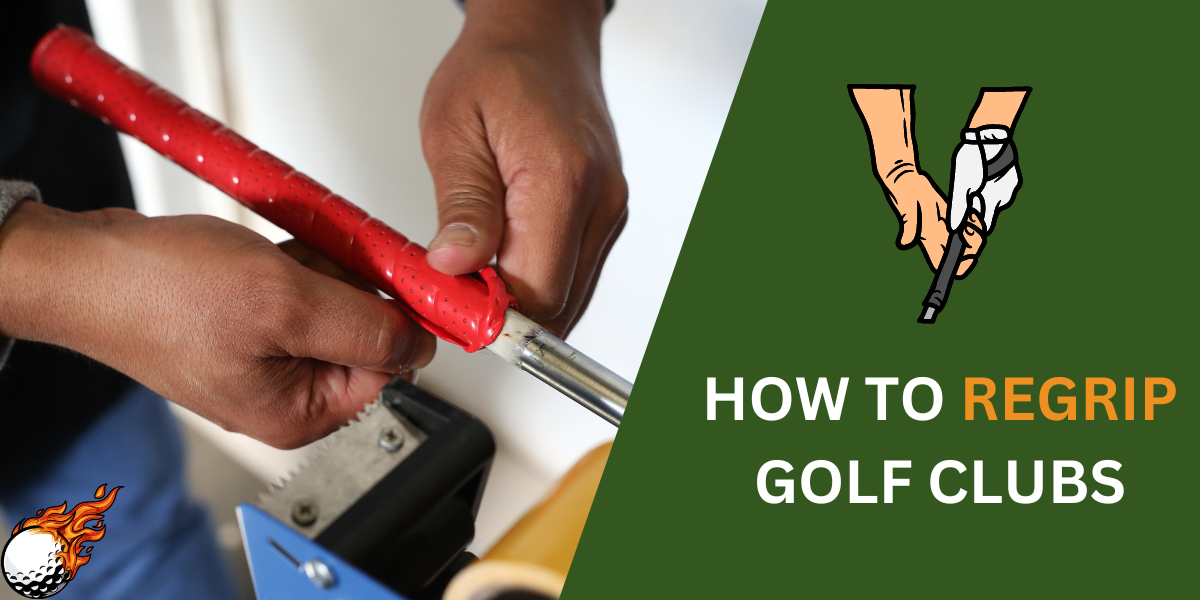
Ever feel like your golf swing is decent, but something’s just off?
Your slices and hooks tell you it’s not just your form but something more fundamental.
The culprit is often your golf stance. Getting this basic wrong unravels the rest of your swing.
The right stance is essential, but it can be tricky to nail the details like ball position.
Good news! There are proven techniques for perfecting your golf stance and achieving a solid foundation for better shots.
This post will explain 15 ways to optimize your setup, including proper ball position, for a reliable, powerful swing.
Key Takeaways
- Feet Position: Keep them shoulder-width apart, aligned parallel to the target for stability and direction.
- Weight Distribution: Balance weight evenly between both feet for control and stability during swings.
- Knee Flexibility: Slight bending of knees adds flexibility and readiness, enhancing swing dynamics.
- Body Alignment: Align feet, hips, and shoulders parallel to the target line; maintain a straight spine and steady head for consistent swings.
- Swing Speed: A perfect golf stance aids in a more efficient energy transfer, increasing swing speed and shot distance.
Can You Fix Your Golf Stance in 2024?
Absolutely! Let’s dive into the 15 essential aspects of that perfect golf stance you’ve been craving.
1. Find the Sweet Spot: The Golf Ball Position
The golf ball’s position dramatically impacts your swing. I used to place it too far forward, leading to wonky slices. Focus on these positions for different clubs:
- Driver: Just inside your lead heel
- Irons: Slightly back of center
- Wedges: Center of your stance

2. Lead Foot Matters
Think of your lead foot (left foot if you are right-handed) as the anchor of your swing. It should be firmly planted but not overly tense. Turning it slightly outward can help with hip rotation and power.

3. Shoulders: Not Just For Carrying Your Golf Bag
I used to hunch my shoulders, which cramped my swing. Your lead shoulder should be slightly higher than your trail shoulder. This setup promotes a solid swing path.
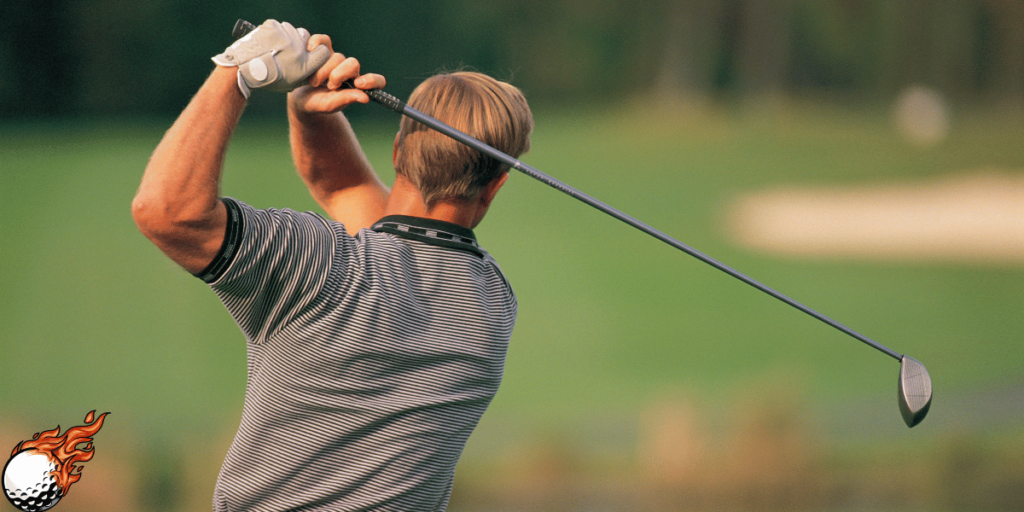
4. It’s All in the Hands: Neutral Golf Grip
A neutral grip creates the best chance for a square club face at impact. Interlock or overlap your fingers, but focus on avoiding a grip that’s too strong or weak.

5. Your Body Knows the Way: Proper Posture
Think “athletic” when setting up the ball. A slight bend in your knees, a tilt from your hips (not hunching), and relaxed arms set up a robust base for your swing.
6. Feet Apart, Success in Sight: Shoulder Width Stance
Shoulder width is a good guide for most golfers regarding foot position. Too wide or narrow can throw off your balance and swing power.
7. Target Practice: Aim Your Body
Your body alignment matters as much as where your clubface points. Square your shoulders and feet with your target line for the best results.

8. The Heel Reveal: Power in Balance
Think of being able to slightly lift your lead heel off the ground at the top of your backswing – that’s a sign of good weight transfer and rotation.

9. Don’t Overthink It: Keep the Upper Body Relaxed
Tension is the enemy of a fluid swing. Keep your arms and shoulders relaxed. I used to grip the club too tightly, killing my distance.
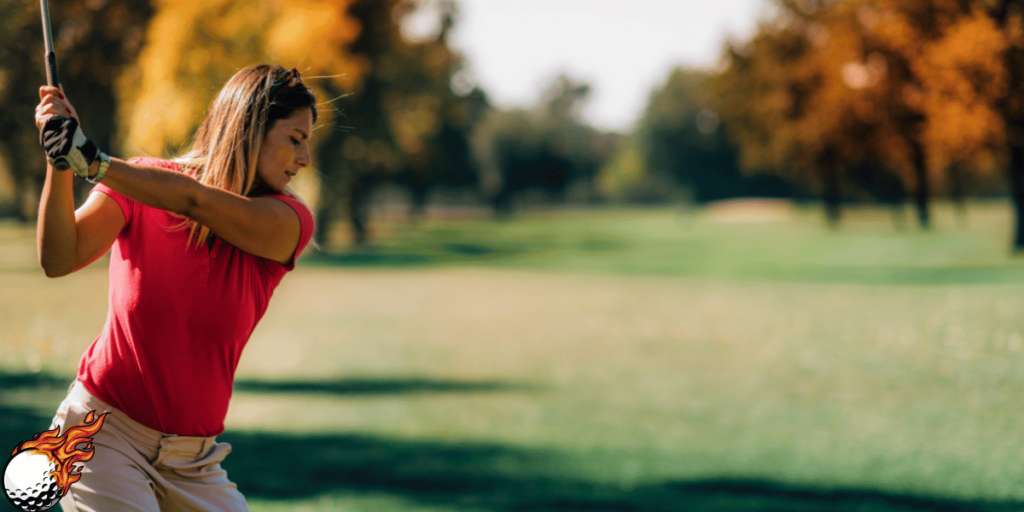
10. Smooth Operator: Mastering the Swing Path
Your stance is the foundation of a good swing path. When my setup is off, I tend to have an outside-in swing causing nasty slices.
11. Tee Box Position
When addressing the ball, especially with woods and your driver setup, place your feet so they align with or are slightly inside the line formed by the inside edges of your heels. This will promote a more powerful inside-out swing path.
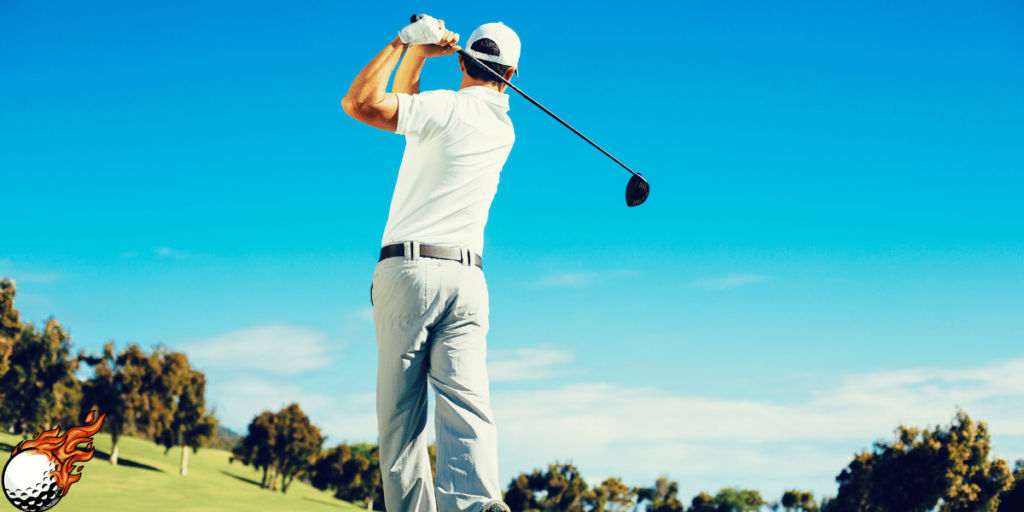
12. Left Heel at Impact
As you swing through the ball, focus on keeping pressure on your left heel. This indicates good weight transfer towards your target and can help you hit the ball solidly, achieving your ideal low point.
13. Left Side Connection
Maintain a sense of connection throughout your left side during your swing. This helps promote stability and consistent contact with the lead hand, which is especially key for longer drives.
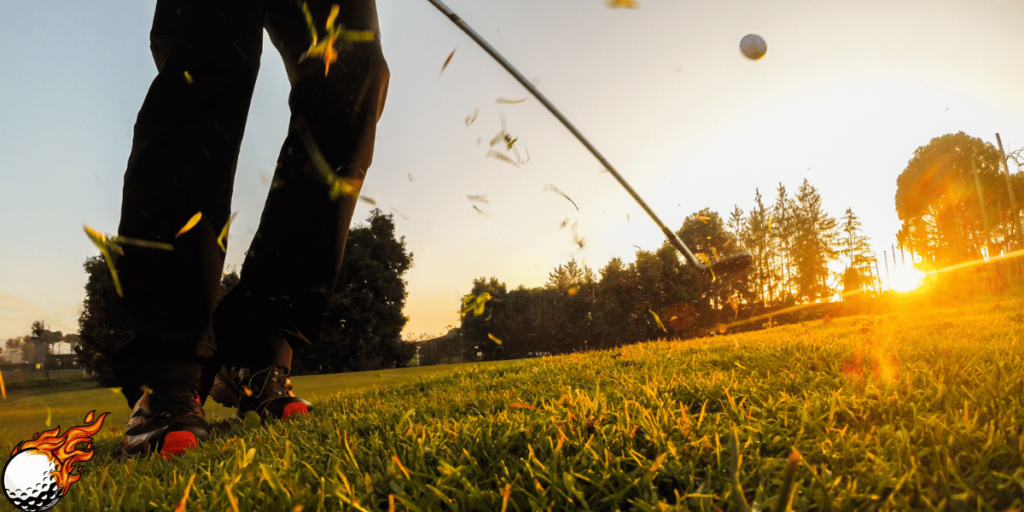
14. Stance Width and Hip Rotation
Start with a shoulder-width stance and experiment slightly going a bit wider (within reason) to see if this helps you achieve a wider range in your hip rotation during the swing. This can unlock potential for increased power.

15. Practice Makes Perfect
Don’t expect to master your golf stance overnight. Dedicate time on the range, focusing on your setup before hitting balls. It will pay off on the course!
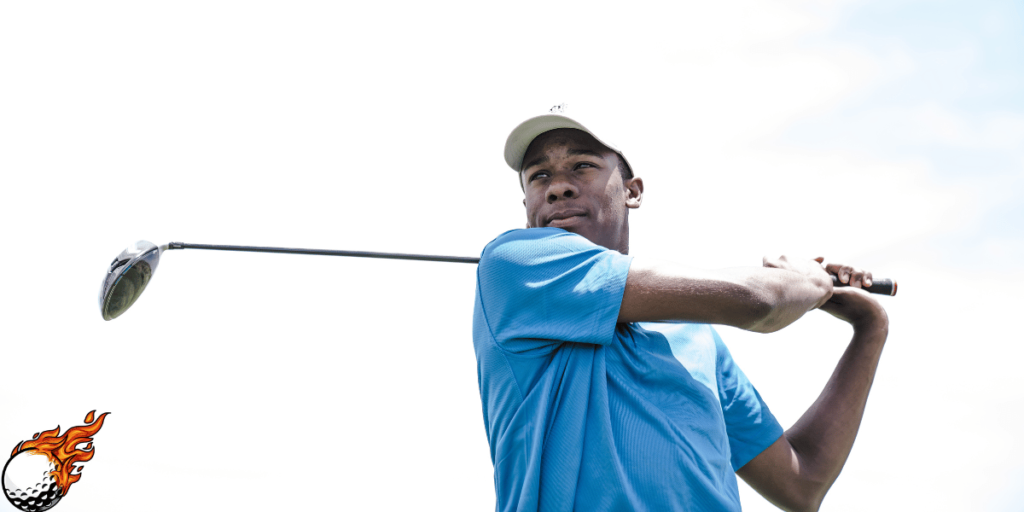
Why Does a Proper Stance Matter in Golf?
A solid golf stance may seem basic, but it’s the foundation for everything that follows in your swing.
A perfect position unlocks power, consistency, and accuracy.
Think about it: how can you expect a square club head and a fluid swing path if your feet, hips, and shoulders aren’t working together?
Many amateur golfers struggle because they focus on swinging the golf club without mastering the setup. It’s like building a house on sand!
Final Thoughts
Mastering your golf stance is an ongoing journey, not a one-time fix.
Remember, minor adjustments– like the position of your lead foot, a slightly higher lead shoulder, or even the tilt of your hips – can have a big impact on your game.
Experiment with the range to find what feels comfortable and powerful for you.
If you’re struggling, investing in a lesson with a qualified golf instructor can give you personalized guidance.
Finally, don’t underestimate the power of video! Recording your swing provides visual feedback to help you identify areas for improvement in your stance.
Frequently Asked Questions
How wide should my golf stance be?
Generally, aim for a shoulder-width stance. However, adjust slightly based on the club: a touch wider for your driver and a bit narrower for shorter irons and wedges. Experiment to find what promotes stability and power for you.
Should my weight be on my heels or toes in my golf stance?
Distribute your weight evenly between the balls of your feet and your heels. This helps maintain balance throughout your swing for better contact.
Why is my lead shoulder slightly higher at the address?
This slight tilt in your shoulders helps promote a proper swing path. It encourages an inside-out swing for better power and less chance of a slice.
Where should the ball be positioned for my driver?
Position the ball just inside your lead heel for optimal launch and distance with the driver.
Can my golf stance affect my swing speed?
Absolutely! A stable, balanced stance with proper weight transfer from your backswing to downswing allows you to generate maximum clubhead speed.









